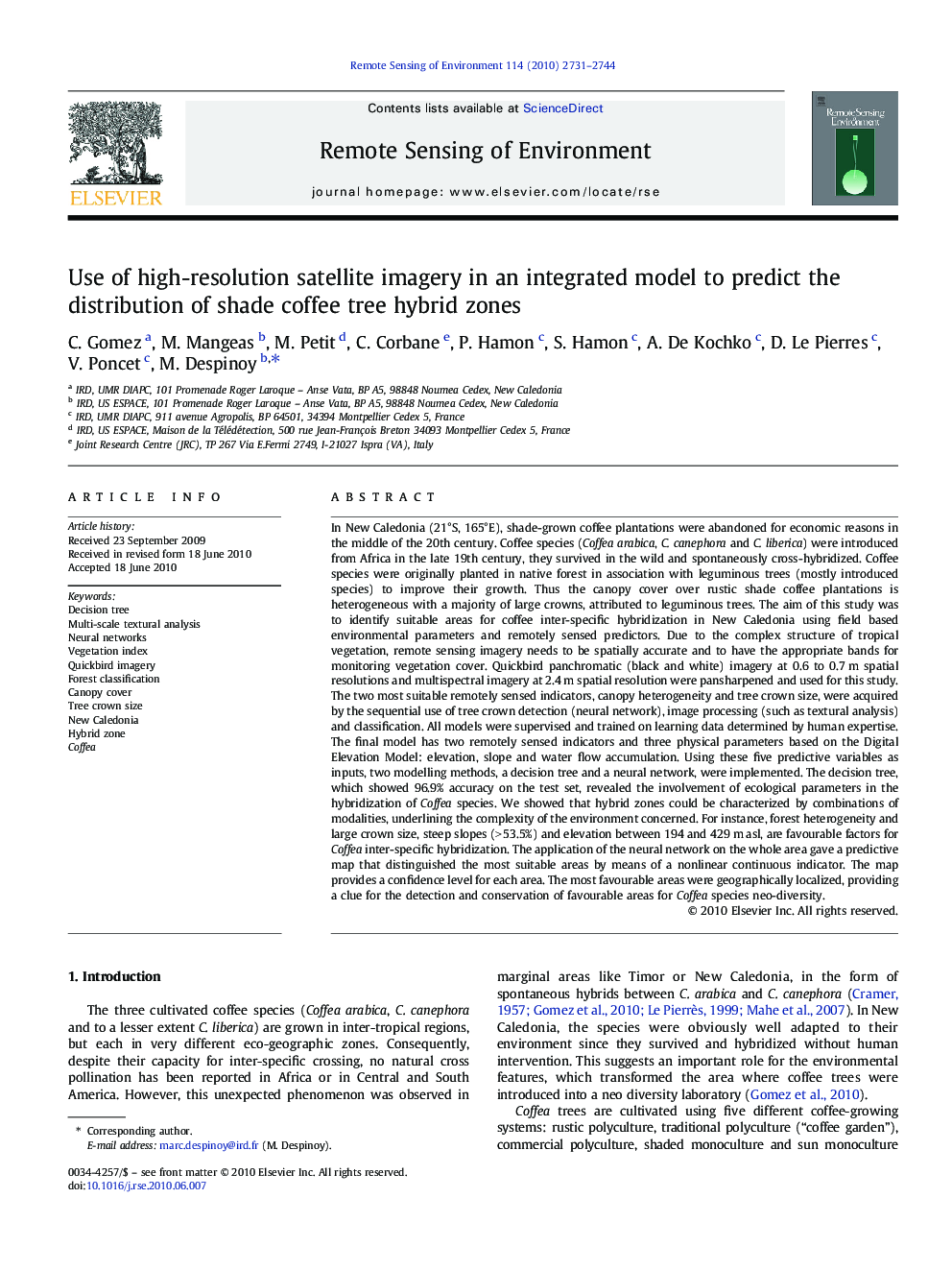| کد مقاله | کد نشریه | سال انتشار | مقاله انگلیسی | نسخه تمام متن |
|---|---|---|---|---|
| 4459844 | 1621298 | 2010 | 14 صفحه PDF | دانلود رایگان |

In New Caledonia (21°S, 165°E), shade-grown coffee plantations were abandoned for economic reasons in the middle of the 20th century. Coffee species (Coffea arabica, C. canephora and C. liberica) were introduced from Africa in the late 19th century, they survived in the wild and spontaneously cross-hybridized. Coffee species were originally planted in native forest in association with leguminous trees (mostly introduced species) to improve their growth. Thus the canopy cover over rustic shade coffee plantations is heterogeneous with a majority of large crowns, attributed to leguminous trees. The aim of this study was to identify suitable areas for coffee inter-specific hybridization in New Caledonia using field based environmental parameters and remotely sensed predictors. Due to the complex structure of tropical vegetation, remote sensing imagery needs to be spatially accurate and to have the appropriate bands for monitoring vegetation cover. Quickbird panchromatic (black and white) imagery at 0.6 to 0.7 m spatial resolutions and multispectral imagery at 2.4 m spatial resolution were pansharpened and used for this study. The two most suitable remotely sensed indicators, canopy heterogeneity and tree crown size, were acquired by the sequential use of tree crown detection (neural network), image processing (such as textural analysis) and classification. All models were supervised and trained on learning data determined by human expertise. The final model has two remotely sensed indicators and three physical parameters based on the Digital Elevation Model: elevation, slope and water flow accumulation. Using these five predictive variables as inputs, two modelling methods, a decision tree and a neural network, were implemented. The decision tree, which showed 96.9% accuracy on the test set, revealed the involvement of ecological parameters in the hybridization of Coffea species. We showed that hybrid zones could be characterized by combinations of modalities, underlining the complexity of the environment concerned. For instance, forest heterogeneity and large crown size, steep slopes (> 53.5%) and elevation between 194 and 429 m asl, are favourable factors for Coffea inter-specific hybridization. The application of the neural network on the whole area gave a predictive map that distinguished the most suitable areas by means of a nonlinear continuous indicator. The map provides a confidence level for each area. The most favourable areas were geographically localized, providing a clue for the detection and conservation of favourable areas for Coffea species neo-diversity.
Journal: Remote Sensing of Environment - Volume 114, Issue 11, 15 November 2010, Pages 2731–2744